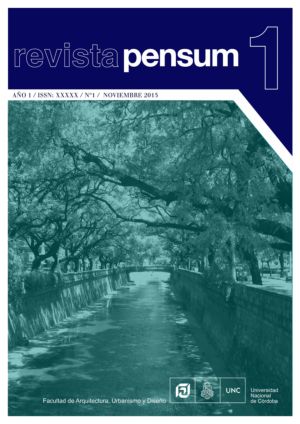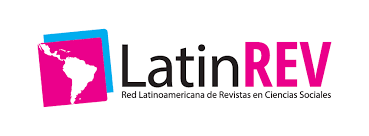SYSTEMATIZATION OF TEACHING PRACTICES IN FORMAL SPACES FOR A CREATIVE METHODOLOGY
DOI:
https://doi.org/10.59047/2469.0724.v1.n1.12944Keywords:
Teaching methodologies, creativity, capabilities, space, form.Abstract
Thinking about teaching methodologies implies denaturalizing the perspective on the teaching of architectural form and space. Taking some steps back from teaching practices and articulating the theories of Vigotzky, Gardner and Rodríguez Arocho, a pilot teaching process was carried out for the generation, construction and exploration of formal spaces in the first year of Architecture course of studies. The project included two dimensions: micro design, i.e., everyday practices in class with three learning moments (creative, development, closing); and macro project, i.e., the creative methodological construction with the systematization of these practices. This process developed new pedagogical and teaching modalities. It worked on the “close development area” through the “different capabilities” of the individual and the processes and tools that ensured the internalization of language through an appraisal of the formal space. The project noted that creativity related to the students’ psychological maturity, as well as to external conditions and the encouragement they received. A variety of exercises allowed for individual-based teaching and students’ autonomy. The passage from one language to the other and from one capability to the other encouraged understanding and interpretationDownloads
References
Barco, S. (2006). Módulo la enseñanza de la Arquitectura y el Diseño, en la carrera de Especialización. Córdoba.
FAUDI-UNC.
Brecht, B. (1957). Ópera de los dos centavos. Buenos Aires. Ediciones Losange.
Edelstein, M.V. (1998). Condiciones educativas de una organización laboral: ámbitos de estructuración de los procesos de aprendizaje. Córdoba. Edición de la autora.
Freedman, K. (2003). Teaching Visual Culture: Curriculum, Aesthetic and Social Art of Life; New York. London.
Teachers College Press.
Gardner,H. (1995). Inteligencias Múltiples. La teoría en la práctica. Barcelona. Ediciones Paidós Ibérica S.A.
Litwin, E. (comp.)(2005). Tecnologías educativas en tiempos de Internet. Buenos Aires. Amorrortu editores.
Osho, B. (2008). Inteligencia: La respuesta creativa al ahora. Buenos Aires. Editorial. Sudamericana.
Rodríguez Arocho, W (2001). La valoración de las funciones cognoscitivas en la zona de desarrollo próximo. Educere Artículos. Oct-Dic 5(15): 261-269.
Rodríguez Arocho, W (2000). Una aproximación histórico cultural a la revolución cognoscitiva de cara al nuevo
milenio. Educere Artículos. Feb 2(8): 22-30.
Vigotsky y la educación. Buenos Aires. Aique 4- 16
Sabulsky, G. (2007) La integración de las nuevas tecnologías como problema metodológico. Apunte de curso de
posgrado “la enseñanza y el aprendizaje” PROED/CEA.
Salomón, G. (comp.) (1993). Cogniciones distribuidas. Consideraciones psicológicas y educativas. Buenos Aires.
Amorrortu editores.
Vigotzky, L. (1979) El desarrollo de los procesos psicológicos superiores. Barcelona. Grijalbo
Downloads
Published
How to Cite
Issue
Section
License
Authors who publish in this journal agree to the following terms:
a. Authors retain copyright and guarantee to the journal the right to be the first publication of the work as well as licensed under a Creative Commons Attribution-ShareAlike 4 license.
b. Authors may separately establish additional agreements for non-exclusive distribution of the version of the work published in the journal (e.g., placing it in an institutional repository or publishing it in a book), with an acknowledgement of its initial publication in this journal.
c. Authors are permitted and encouraged to disseminate their work electronically (e.g., in institutional repositories or on their own website) before and during the submission process, as this may result in productive exchanges, as well as earlier and greater citation of published work (See The Effect of Open Access).
d. 4.0 International Creative Commons Attribution-ShareAlike 4.0 License.












